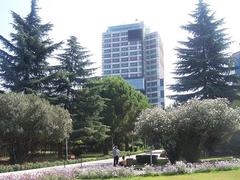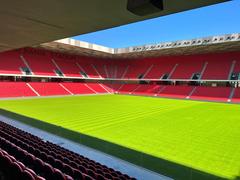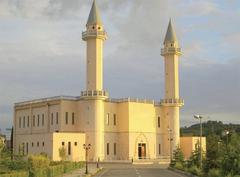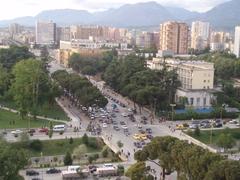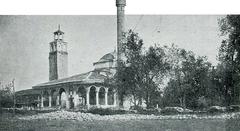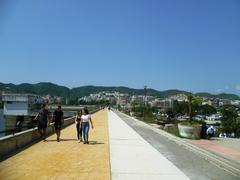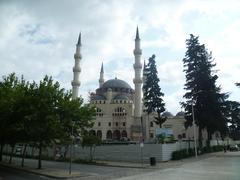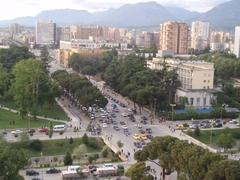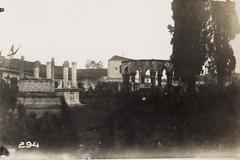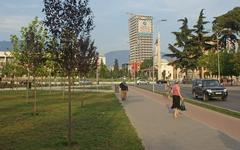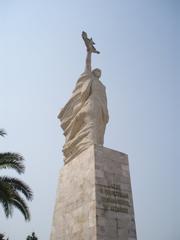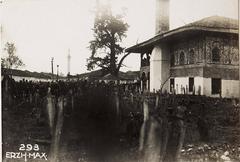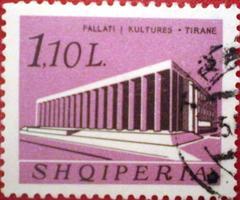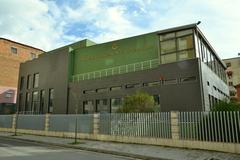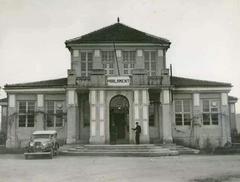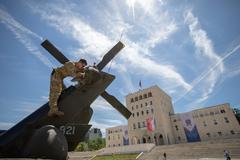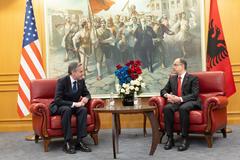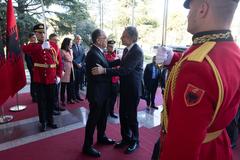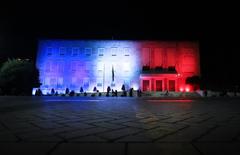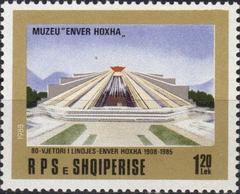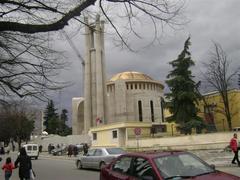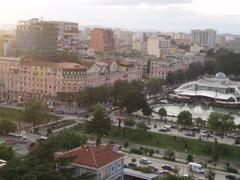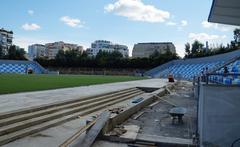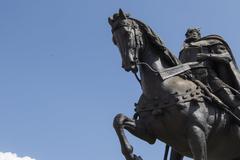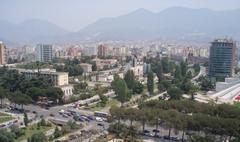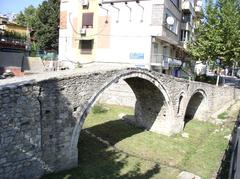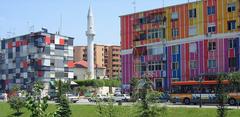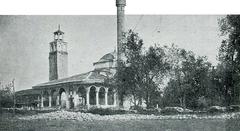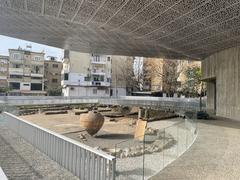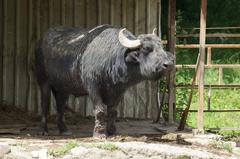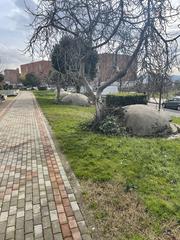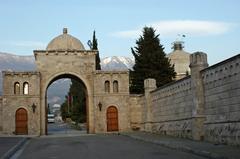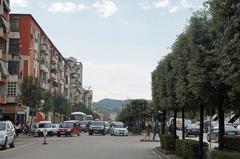Justinian Fortress Tirana: Visiting Hours, Tickets, and Historical Sites Guide
Date: 14/06/2025
Introduction to Justinian Fortress Tirana
Located in the heart of Tirana, Albania’s capital, the Justinian Fortress—also known as Tirana Castle or Kalaja e Tiranës—is a captivating symbol of the city’s deep historical roots. Erected during the reign of Emperor Justinian I (527–565 AD), this fortress has served as a defensive stronghold and a crossroads for trade and culture for over a millennium (Wind and Whim; Visit Albania). Today, it stands not only as an archaeological landmark but as a vibrant cultural hub, seamlessly integrated into Tirana’s urban life. Restoration efforts have seen its precincts transformed into a lively pedestrian zone, home to traditional eateries, artisan boutiques, and cultural venues—making it a must-visit for travelers and history enthusiasts alike (Visit Tirana; Cestee).
This guide offers a comprehensive overview of the fortress’s historical importance, practical visitor details (including hours and ticketing), accessibility tips, and recommendations for exploring surrounding attractions. Whether you aim to delve into Tirana’s ancient past, enjoy the ambiance of the Old Bazaar, or capture sunset vistas of the illuminated fortress, this resource will help you plan an unforgettable visit (Nomads Travel Guide; Albania360).
Contents
- Introduction
- Origins and Early History
- Medieval and Ottoman Developments
- Decline and Modern Transformation
- Archaeological Discoveries and Restoration
- Visiting Justinian Fortress: Information and Tips
- Visiting Hours
- Tickets
- Guided Tours
- Accessibility
- Travel Tips
- Layout and Key Features
- Cultural Significance and Urban Integration
- Nearby Attractions
- Special Events and Photo Opportunities
- Historical Timeline
- FAQ
- Conclusion and Call to Action
Origins and Early History
The Justinian Fortress traces its origins to the Byzantine era, with construction attributed to Emperor Justinian I. Built as part of a defensive network across the Byzantine Empire, the fortress was strategically positioned along ancient trade routes and the Lana River, serving both military and commercial functions (Visit Albania). Over time, it became a pivotal site for controlling regional movement and commerce, bearing witness to the evolution of Tirana from a minor settlement to a growing urban center.
Medieval and Ottoman Developments
By the 14th century, the fortress had become a key stronghold. With the Ottoman conquest in the late 15th century, it was adapted to suit new administrative and military needs, further integrating it into the city’s expanding urban landscape (Wind and Whim). The castle’s location at the city’s crossroads made it a focal point for trade and governance during the Ottoman era.
Decline and Modern Transformation
The 19th and 20th centuries saw the fortress lose strategic military importance as Tirana expanded. Portions of the original structure were dismantled or repurposed. Despite neglect during the communist era, renewed interest in the early 21st century led to significant restoration and conservation projects, reviving the site as a vital part of Tirana’s cultural landscape.
Archaeological Discoveries and Restoration
Archaeological work has uncovered Byzantine and Ottoman architectural elements, including walls up to six meters high. Restoration by the Municipality of Tirana and the Albanian Institute of Cultural Monuments has stabilized these remnants and thoughtfully integrated them into the city’s pedestrian-friendly public spaces, particularly along Murat Toptani Street (Wind and Whim; Visit Albania).
Visiting Justinian Fortress: Information and Tips
Visiting Hours
- General access: The fortress area is open daily, with most public spaces accessible from 07:00 to 02:00. Some businesses inside may have slightly different hours (Nomads Travel Guide).
Tickets
- Admission: Entrance to the fortress precinct and Old Bazaar is free. Special exhibitions or guided tours may require booking and a fee (Evendo).
Guided Tours
- Availability: Local tour operators offer guided walking tours that include the fortress. Booking in advance is recommended for in-depth historical context.
Accessibility
- Terrain: Most of the site is pedestrian-friendly, but some uneven surfaces and ancient stonework may pose challenges for visitors with mobility impairments. Comfortable footwear is recommended.
Travel Tips
- Visit in early evening for the best atmosphere and illuminated fortress walls.
- Weekdays are less crowded.
- English is widely spoken, but basic Albanian greetings are appreciated.
- Remain vigilant for pickpockets in busy areas.
Layout and Key Features
- Walls and Towers: The standing 6-meter-high walls are a prominent Ottoman-era feature, with three towers still visible today (IETT).
- Gateways: Foundations of former gates mark historic access points.
- Old Bazaar: A vibrant pedestrian zone filled with restaurants, wine bars, artisan stores, and cultural spaces (Visit Tirana).
- Mosaic: Near Parliament, a commemorative mosaic marks 100 years of Albanian independence (Wikipedia).
Cultural Significance and Urban Integration
Declared a “monument of culture of first category” in 1973 and further protected in 2008, the fortress is a testament to Albania’s cultural resilience (Visit Albania). Its adaptive reuse as the Old Bazaar has created a lively social and artistic hub, seamlessly blending ancient heritage with contemporary urban life. The fortress is owned by the historical Toptani family, whose stewardship has played a role in its preservation (Albania360).
The 2018 revitalization project, part of Tirana’s TR030 Master Plan, transformed the fortress into a pedestrian-friendly district, fostering cultural continuity and inclusive urban engagement (ArchDaily; Cestee).
Nearby Attractions
- Skanderbeg Square: Main plaza and cultural heart of Tirana.
- Et’hem Bey Mosque: An Ottoman-era mosque near the fortress.
- National Gallery of Arts: Located behind the fortress (Lonely Planet).
- New Bazaar (Pazari i Ri): Lively market for local produce and goods.
- National Historical Museum: Extensive exhibits on Albanian history.
Special Events and Photo Opportunities
- Cultural Events: Regular art exhibitions, live music, and local markets animate the fortress, especially in summer (Visit Tirana).
- Photography: The Old Bazaar, illuminated ancient walls, and cityscape views provide exceptional photo spots.
- Photo Booth: Available just outside the walls for souvenir snapshots (Spotted by Locals).
Historical Timeline
- 6th Century: Construction under Emperor Justinian I.
- 14th Century: Documented as a feudal stronghold.
- 15th–19th Centuries: Ottoman adaptation and integration.
- 20th Century: Decline, partial demolition, later protected as a monument.
- 21st Century: Archaeological rediscovery, restoration, and adaptive reuse.
Frequently Asked Questions (FAQ)
Q: What are the visiting hours of the Justinian Fortress?
A: The site is generally open daily from 07:00 to 02:00; individual businesses within may have different hours.
Q: Is there an entrance fee?
A: No, entry to the fortress and Old Bazaar is free.
Q: Are guided tours available?
A: Yes, local operators offer historical walking tours that include the fortress.
Q: Is the site accessible for visitors with limited mobility?
A: The area is mostly accessible, though some uneven terrain may pose challenges.
Q: What dining options are available?
A: Numerous restaurants, cafes, and wine bars are located inside the Old Bazaar.
Q: Can I take photos?
A: Photography is welcome throughout the site.
Conclusion and Call to Action
The Justinian Fortress is a living link between Tirana’s ancient heritage and its vibrant modern culture. Whether your interest lies in history, architecture, dining, or urban exploration, the fortress offers a unique and engaging experience. For the latest updates, insider tips, and exclusive deals, download the Audiala app. Plan your journey, share your experiences, and immerse yourself in this remarkable piece of Albania’s story.
Sources and Further Reading
- Wind and Whim - Visiting Justinian Fortress in Tirana: History, Tickets, and Travel Tips
- Visit Albania - Justinian Fortress
- Visit Tirana - Justinian Fortress
- Nomads Travel Guide - Fortress of Justinian
- Cestee - Tirana Castle
- ArchDaily - Tirana Reimagined
- Albania360 - Top 15 Things to Do in Tirana in 2025
